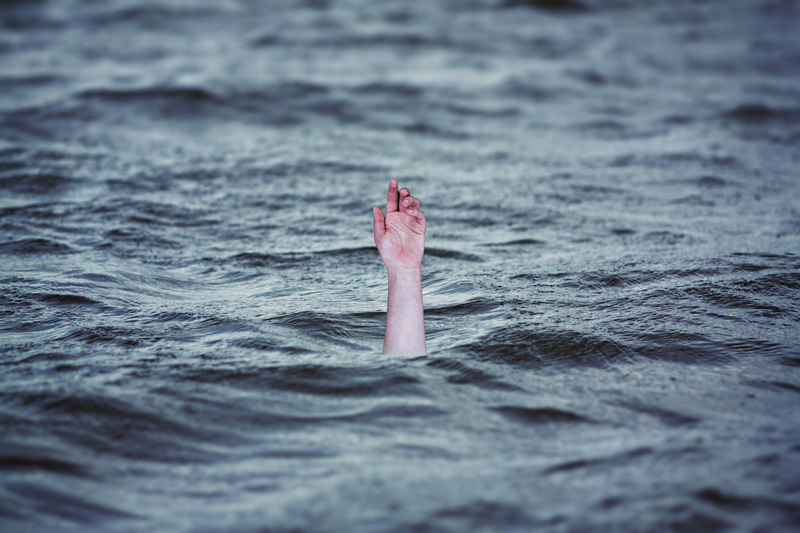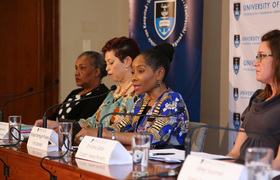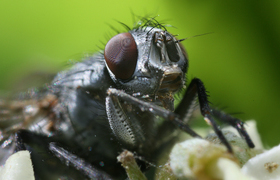Identifying those who die at sea
25 October 2018 | Story Supplied. Photo Max Pixel. Read time 5 min.
The University of Cape Town (UCT) is spearheading a study that could be key to resolving the worldwide challenge of identifying human remains found in the ocean or washed up on the beach, the success of which would bring closure to grieving families.
Run by UCT’s departments of Human Biology and Pathology, the pilot study is using teeth to explore DNA preservation in the marine environment, following on the success they’ve already demonstrated in other studies involving degraded DNA.
Titled “Can forensically usable DNA be successfully extracted from teeth submerged in False Bay, Cape Town?”, the study forms part of a larger research project on decomposition in the bay’s sea environment, according to Dr Victoria Gibbon, senior lecturer and biological anthropologist.
Cape Town’s Salt River mortuary frequently receives human remains that have been washed up on local beaches and surrounds in various states of decay. To date, the extraction of sufficient quantities of good DNA has proved problematic, if not impossible, due to limited research detailing the effects of the sea on DNA degradation.
The most recent South African statistics, from 2015, show that about 2 000 people drowned in the country that year, with 279 drownings occurring in the Western Cape. This applied to both marine and freshwater environments, such as swimming pools.
DNA preservation and degradation
Gibbon said that in most wash-up cases, visual and fingerprint identification is impossible, with identification via traditional anthropological methods similarly difficult due to extensive decomposition.
“In many cases, the remains that are washed ashore … have little soft tissue present,” she explained.
Now, via the larger research project by Belinda Speed, who is completing her doctorate in forensic medicine, there is an opportunity to investigate DNA preservation and degradation in the marine environment.
Under the supervision of Gibbon and forensic science lecturer Laura Heathfield, MPhil student Chandra Finaughty demonstrated a proof of concept using teeth extracted from pigs, then preparing the samples for DNA extraction. If DNA could be extracted, further research would be necessary to apply the findings to a more accurate human model.
“In many cases, the remains that are washed ashore … have little soft tissue present.”
Heathfield explained that nuclear DNA was the main molecular target in this study, in line with the fact that the South African Police Services (SAPS) Forensic Science Laboratories use only this type of DNA to generate a forensic DNA profile.
“However, in our study positive results were found for mitochondrial DNA, which displayed better preservation over nuclear DNA in some samples,” she said.
Gibbon said SAPS and the country’s Forensic Pathology Services are unable to deal with the volume and complexity of many of the wash-up cases, due to a lack of research around the marine taphonomic processes (the processes that affect the remains of an organism after it dies).
Collaborative research
“Considering taphonomic processes are greatly influenced by environmental parameters such as sea temperature and scavenger activity, it is integral to study this process in specific geographical locations,” she said, adding that further investigation of mitochondrial DNA preservation in the marine environment for use in routine forensic case work is also necessary going forward.
The study also highlighted the need for collaborative research in the local region, considering the effects of area-specific variables, such as differences within marine ecosystems, have yet to be fully understood.
Gibbon pointed out that as long as these questions go unanswered, and it remains almost impossible to successfully recover DNA from the bodies of people who die at sea or are washed up on the beach, they will continue to be unidentified.
“DNA is often the only method of identification, and is used to confirm any probable identity. Therefore, the process needs optimisation and development on human samples,” she said, adding that they have applied for relevant funding to pursue this line of study.
 This work is licensed under a Creative Commons Attribution-NoDerivatives 4.0 International License.
This work is licensed under a Creative Commons Attribution-NoDerivatives 4.0 International License.
Please view the republishing articles page for more information.










